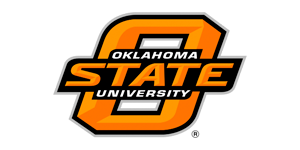- SAS案例_SAS统计软件的客户涵盖世界五百强中的知名企业 | SAS
- Oklahoma State University
OSU achieved this using • SAS® Enterprise Miner™ • SAS® Enterprise Guide® • SAS® Visual Analytics and SAS® Visual Statistics on SAS® Viya®
Oklahoma State University uses SAS to create an analytics culture and increase student success
Oklahoma State University (OSU) is among a growing number of universities using data and analytics to streamline reporting and drive data-informed decision making across campus. Led by the office of Institutional Research and Information Management (IRIM), the university is transforming the way it delivers information through the use of advanced analytics and predictive modeling from SAS.
Christie Hawkins, Associate Vice President for Administration and Finance and Director of IRIM, is spearheading the culture of analytics at an institution that previously relied on raw numbers and static reports to share information with stakeholders.
“The culture of analytics in higher education is changing,” Hawkins says. “Everything is happening so much faster now. We need the ability to proactively respond to changes instead of reacting to them several months later.”
Larry Burns, Assistant Director of IRIM, agrees. “Increasingly, our world is judged by how businesses operate, especially in higher education. We need cutting-edge tools to show our constituents, our legislatures and our regulators the value of what we do.”
To deliver on the promise of analytics, OSU invested in SAS Enterprise Miner and SAS Enterprise Guide as well as SAS Visual Analytics and SAS Visual Statistics on SAS Viya.
Now the IRIM office can consolidate data sources, analyze data, produce interactive reports and give administrators and faculty insight-rich information to make data-informed decisions.
Being able to look at data in new ways has really changed our culture … we’re looking more toward analytics and how we do modeling now instead of just looking at numbers and categories of numbers.Christie Hawkins Associate Vice President for Administration and Finance and Director of IRIM Oklahoma State University
From static documents to dynamic reports
The journey started a couple years ago, following a major systems upgrade that gave the IRIM office an opportunity to vastly improve how reports were produced and data was provided to faculty and administrators. That’s when OSU turned to SAS.
“SAS was the best option for us,” Hawkins says. “In addition to the great visuals of SAS Visual Analytics, SAS allows us to pull data from various systems, combine it, create our files and share data across campus.”
Within five months of deploying SAS solutions, Hawkins and her team produced an interactive Fact Book. Transforming the Fact Book from a static document into a dynamic reporting dashboard gave the IRIM office a quick win while supplying decision makers with insights on the go.
Now, instead of printing documents and taking them to meetings, administrators have access to a world of student information on their smartphones or tablets, allowing them to quickly and dynamically drill into specific areas to compare year-over-year changes.
“It was certainly a time savings,” Hawkins says. “Using SAS shortened production time of the Fact Book from six weeks to one. Now we can focus on bigger and better things rather than putting data in a spreadsheet and turning it into a PDF.”
Advanced analytics leads to enhanced engagement and retention
With better information at hand, administrators began asking more sophisticated questions. “Being able to look at data in new ways really changed our culture,” Hawkins says.
Student retention became a major focal point. The university found it was losing 800 students during their first year – more than every other year combined. It also noticed that students who returned for a second year had an 80 percent graduation rate. This compelled officials to look deeper at retention drivers.
The IRIM office began analyzing card-swipe data for first-year students. Seeing how often freshmen swipe their ID cards at the wellness center, dining halls and more exposed trends. “If a student is good about going to the wellness center in the first month and then suddenly stops going, that’s a red flag,” Hawkins says. “Now our First-Year Success Office can reach out to those students and help keep them engaged.”
OSU also has a series of retention dashboards that link graduation rates with things like gender, ethnicity, Pell Grant status, ACT scores and other factors. The university uses predictive models in SAS Visual Statistics to identify which students are dropout risks and can proactively help these students maintain their path toward graduation.
“We needed to be able to do predictive analytics in a way that we could share the data with other people who aren’t statisticians,” Burns explains. “SAS Visual Statistics on SAS Viya gave us the opportunity to do more advanced statistical operations and the ability to show people the results without having to get bogged down in the statistics. Now others can see our analysis visually and really understand it and use it – instead of being scared of it. Everyone benefits.”
Oklahoma State University – Facts & Figures
1890
year founded
35,000
students across five campuses
100+
countries represented by students
Streamlining classroom use
Another analytics project bearing fruit is the classroom utilization project. For the past six years, the IRIM office has performed a tedious process of manually tracking classroom usage. This helps administrators determine if new classrooms or buildings are needed to meet demand.
Using SAS Visual Analytics on SAS Viya, the team has streamlined this process – reducing it from months to moments – with a classroom utilization dashboard. Now, university planners can instantly examine classroom capacity for every building at every time of the day, allowing them to renovate existing spaces instead of constructing new buildings, in some cases.
“SAS not only saves us time in research and manual data entry, but it also helps us use the resources we have more efficiently,” Burns says.
Future analytics plans
SAS Viya also adds a layer of security and versatility to the IRIM reports. These features will come in handy as the office expands its reporting and analytics capabilities to HR and finance, and other universities in its network.
“We want to implement a shared service model so these campuses can also benefit from SAS,” Hawkins says. “Being able to give our end users all the data and analytical insight has been a great thing for OSU. This partnership with SAS has definitely moved us forward.”
本文中所展示的成果取决于文中所述的特定场景、业务模式、数据输入和计算环境。每位SAS客户的体验都因其业务和技术特性而不同,请勿将本文观点视为通用观点。实际的成本节约、成果和效果最终取决于每位客户的实际配置和条件。SAS不保证每位客户都能取得本文类似的成果。SAS仅对SAS的产品和服务提供保证,请参阅SAS的产品服务质保条款,本文中提及的内容不能视为质保条款。客户可以按照合约商定的条款分享SAS软件实施项目的成功案例,相应的品牌和产品名称归属相应的公司所有。




